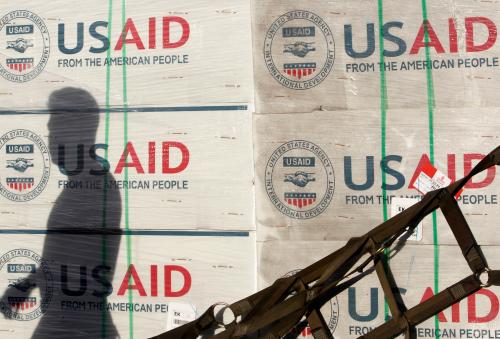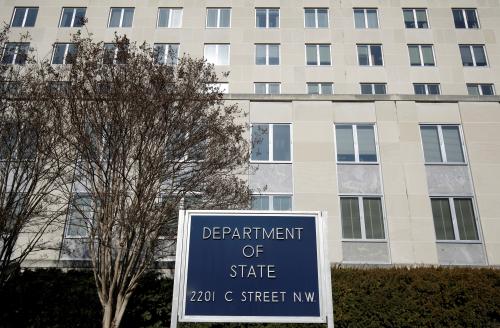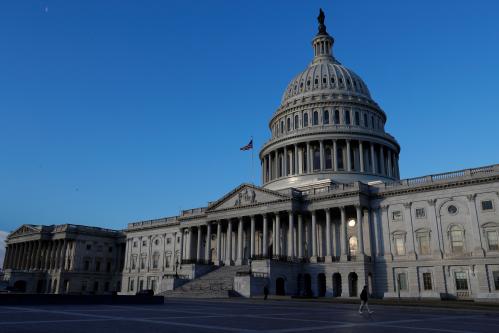The Better Utilization of Investments Leading to Development Act (BUILD Act)—which aims to “facilitate the participation of private sector capital and skills in the economic development of countries with low- or lower-middle-income economies”—has made its way through the House and Senate authorizing committees. The House Foreign Affairs Committee strengthened the development components of the legislation and then the Senate Foreign Relations Committee further advanced the development mandate. A review of the legislation casts no doubt that the proposed International Development Finance Corporation (IDFC), successor to the Overseas Private Investment Corporation (OPIC), is first and foremost a development agency.
Mandate
The bill’s policy statement clearly states that the mission of the IDFC is to facilitate “sustainable, broad-based economic growth, poverty reduction, and development.” It is directed “to achieve clearly defined economic and social development outcomes” and to build “public accountability and transparency” and follow “high standards of transparency and environmental and social safeguards.” The development community could not ask for stronger directives that the IDFC is to be a development agency committed to the highest standards of development, transparency, and accountability.
The legislation sets a priority on less-developed countries, minority and women-owned business, small business, and women’s economic empowerment.
Structural Elements
The BUILD Act also outlines the structure of the new entity to enforce this mandate. The administrator of the U.S. Agency for International Development (USAID) is designated as the vice-chair of the board, and the four non-government members of the board are to have, in addition to private sector expertise, relevant experience in “the environment, labor organizations, and international development.”
One of the three top senior officers specified by the legislation is the chief development officer. The responsibilities of the office include
- coordinating development policies and efforts with other relevant U.S. government agencies and the country missions of USAID;
- managing employees involved in the co-design of projects with USAID;
- authorizing the transfer of funds to and from other U.S. government agencies;
- overseeing performance measurement and evaluation and learning;
- the development aspects of the annual report; and
- engagement with partners.
The legislation establishes a Development Advisory Council, comprised of up to nine members “broadly representative of nongovernmental organizations, think tanks, advocacy organizations, foundations, and other institutions engaged in international development.” The Council is to advise the board on implementing the development mandate.
In addition to an inspector general, IDFC is to have an Independent Accountability Mechanism, established by the board, to “annually evaluate and report…regarding compliance with environmental, social, labor, human rights, and transparency standards.” This is truly innovative and would position the IDFC as the only U.S. government foreign affairs agency with an independent check on its mandate. It would be on a par with the U.K. Department for International Development (DFID) with its Independent Commission for Aid Impact and multilateral development institutions that have independent accountability mechanisms.
The bill has a strong provision on monitoring and evaluation and learning. It requires a “performance measurement system to evaluate and monitor projects…as a successor for the development impact measurement system of OPIC.” It requires standards for ensuring development performance, and that the performance metrics are made publicly available. The annual report is to detail the development impact and the extent to which it is “compatible with the development assistance programs of the United States and qualifying sovereign entities”—a strong directive that the development focus of the IDFC is to fit with U.S. development policy and the priorities of partner countries and collaborating development finance institutions. It also requires that data be made available on a project-level—a change from country-level in the original draft bill—and that project information be linked to the U.S. government foreign assistance dashboard.
Carried over from the statutory authority for OPIC are important provisions respecting worker rights and environmental and social impact.
USAID as a partner
Cooperation with USAID is a priority in the bill. The Administrator of USAID is vice chair of the board, as has already been noted. Further, the senior level chief development officer, in addition to coordinating development policy and managing relations with USAID, is directed to collaborate with USAID in engaging the private sector on the “nexus of business opportunities and development priorities.” Further, the new authority, which OPIC lacks, to provide technical assistance is to be executed in cooperation with USAID.
The policy statement mandates helping countries along the journey to “increased self-reliance,” the goalpost that Administrator Mark Green is establishing for USAID.
The authority to reorganize the U.S. government’s development finance instruments into the new IDFC can be exercised only after the CEO of OPIC and the Administrator of USAID submit a report to the relevant congressional committees, and the report must stipulate the procedures for coordination between USAID and the IDFC.
While the bill transfers to the IDFC the existing USAID Development Credit Authority (DCA), the permissive authority to transfer other functions (the Office of Private Capital and Microenterprise, enterprise funds, and sovereign loan guarantees) can be exercised only with the concurrence of the USAID Administrator.
Development Tools
The IDFC will have the authority to support feasibility studies, with the stipulation that costs are to be shared and reimbursed if the project is successful.
Also new, along with authority for equity finance, which OPIC has lacked, the corporation would be allowed to denominate guarantees and loans in local currency, thereby saving the investor the currency exchange risk. The equity authority is to be used where there would be “significant development impact.”
The corporation is to give priority to the less-developed countries and is directed to pursue highly developmental projects, particularly in areas that are the most underdeveloped and subject to extreme poverty, fragility, and violence.
Implementing the Mandate
The BUILD Act establishes a clear and strong development mandate and provides tools for the new IDFC to be a leader in the development finance community. It requires a robust and transparent process for determining the development impact of projects and for tracking, assessing, and reporting that impact. Development finance entities have been slow in adapting to the transparency movement, but the IDFC now has the directive from Congress to publish data and other information on projects and impact.
In fact, like the Millennium Challenge Corporation (MCC) upon its creation 15 years ago, and USAID in its reinvention beginning this decade and being carried further by Administrator Mark Green, the IDFC has the opportunity, and is challenged by the legislation, to be an accountable, transparent, impact-focused leader in the development community. If the mandate is successfully carried out, it will be working in partnership with USAID for the benefit of both organizations.
In the wake of broad bipartisan support from both the House Foreign Affairs Committee and the Senate Foreign Relations Committee, prospects for passage of the BUILD Act look promising.







Commentary
How the BUILD Act advances development
July 10, 2018